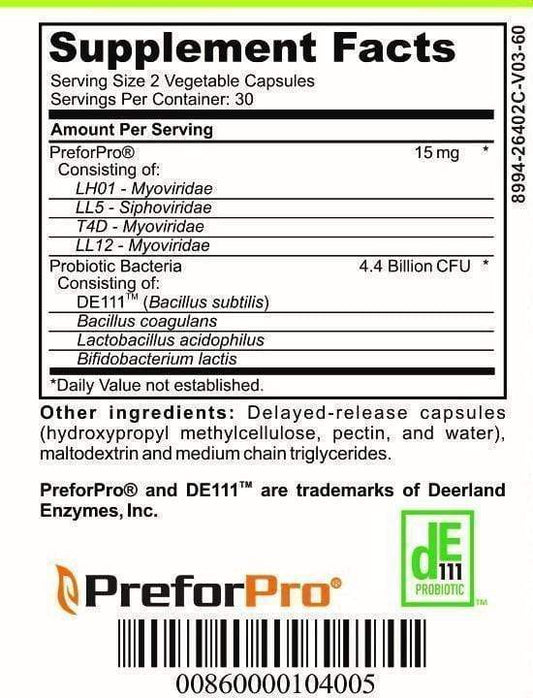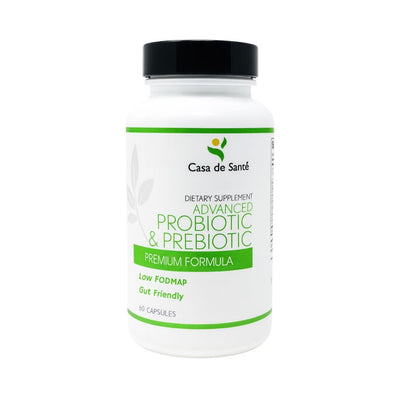A Comprehensive Guide to Understanding Histamine Intolerance and the Antihistamine Diet
A Comprehensive Guide to Understanding Histamine Intolerance and the Antihistamine Diet
Histamine intolerance is a condition that affects many individuals, causing a range of uncomfortable symptoms. In order to effectively manage this condition, it is important to have a comprehensive understanding of histamine and its effects on the body. Additionally, implementing an antihistamine diet can play a significant role in reducing symptoms and improving overall well-being. In this guide, we will explore the science behind histamine intolerance, how it impacts allergies and inflammation, as well as strategies for managing histamine levels through diet.
Understanding the Role of Histamine in Your Body
Histamine is a naturally occurring compound that is involved in various physiological processes in the body. It is produced by mast cells, which are a type of immune cell, and plays a crucial role in the immune response. Histamine is involved in regulating smooth muscle contraction, gastric acid secretion, and the inflammatory response.
But let's dive deeper into the fascinating world of histamine and explore its intricate interactions within the body.
When histamine is released in response to an allergen or other triggers, it can cause a range of symptoms such as itching, redness, inflammation, and swelling. This is why histamine is commonly associated with allergies and allergic reactions. However, there is so much more to histamine than just its role in allergies.
The Science Behind Histamine and Its Effects
When histamine is released, it binds to specific receptors in the body, triggering a cascade of reactions that lead to the characteristic symptoms of histamine intolerance. Histamine receptors are found throughout the body, including the skin, respiratory system, gastrointestinal tract, and blood vessels.
These receptors are like gatekeepers, receiving signals from histamine and transmitting them to different parts of the body. By understanding the complex interactions between histamine and its receptors, scientists and researchers hope to develop effective strategies for managing histamine intolerance.
It is an ongoing area of study, with researchers constantly working to unravel the mysteries of histamine and its receptors. Through their efforts, new treatment options may emerge in the future, offering relief to those who suffer from histamine-related conditions.
How Histamine Impacts Allergies and Inflammation
In individuals with histamine intolerance, the body is unable to break down histamine efficiently, leading to an accumulation of histamine in the body. This can result in chronic inflammation and exacerbation of allergy symptoms.
Imagine a scenario where histamine levels are elevated, triggering an exaggerated immune response. This response causes the release of additional inflammatory chemicals, further intensifying the allergic reaction. Sneezing, watery eyes, hives, and difficulty breathing are just some of the symptoms experienced by individuals with allergies.
However, allergies are not the only domain where histamine wreaks havoc. Histamine can also directly contribute to the development of chronic inflammation, which has been linked to a variety of health conditions. Autoimmune disorders, digestive issues, and skin conditions are just a few examples of conditions where histamine's role in chronic inflammation is being explored.
By understanding how histamine impacts allergies and inflammation, scientists and medical professionals can develop targeted interventions and treatments to alleviate symptoms and improve the quality of life for those affected.
Managing Histamine Levels Through Diet
One of the key strategies for managing histamine intolerance is to follow an antihistamine diet. This involves avoiding foods that are high in histamine and incorporating antihistamine foods into your meals. By doing so, you can help reduce symptoms and improve your overall well-being.
Histamine intolerance occurs when there is an imbalance between the amount of histamine in the body and the ability to break it down. This can lead to a variety of symptoms, including headaches, hives, nasal congestion, and digestive issues. Following an antihistamine diet can help regulate histamine levels and alleviate these symptoms.
Incorporating Antihistamine Foods into Your Meals
There are several foods that have antihistamine properties and can help counteract the effects of histamine in the body. These include foods such as ginger, turmeric, garlic, onions, and green tea. Incorporating these foods into your meals can help support your body's natural ability to regulate histamine levels.
Ginger, for example, contains a compound called gingerol, which has been shown to have anti-inflammatory and antihistamine effects. Adding ginger to your meals or drinking ginger tea can help reduce inflammation and alleviate symptoms associated with histamine intolerance.
Turmeric, another powerful antihistamine food, contains curcumin, a compound known for its anti-inflammatory properties. Curcumin has been shown to inhibit the release of histamine from mast cells, helping to alleviate symptoms such as itching and nasal congestion.
In addition to antihistamine foods, it is important to include a variety of fresh fruits and vegetables in your diet. These are rich in antioxidants and other nutrients that can help support immune function and reduce inflammation. Berries, for example, are packed with antioxidants that can help neutralize free radicals and reduce histamine-induced inflammation.
Leafy greens, such as spinach and kale, are also beneficial for managing histamine levels. They are rich in quercetin, a flavonoid that has been shown to have antihistamine properties. Quercetin helps stabilize mast cells, preventing the release of histamine and reducing symptoms associated with histamine intolerance.
Foods to Avoid on an Antihistamine Diet
While incorporating antihistamine foods into your meals is important, it is equally important to avoid foods that are high in histamine or trigger the release of histamine in the body. Foods to avoid include aged cheeses, fermented foods, processed meats, alcohol, and certain types of fish such as tuna and mackerel.
Aged cheeses, such as blue cheese and Parmesan, are high in histamine due to the fermentation process. These cheeses can trigger symptoms in individuals with histamine intolerance. Fermented foods, such as sauerkraut and kimchi, also contain high levels of histamine and should be avoided.
Processed meats, such as sausages and deli meats, often contain additives and preservatives that can trigger histamine release. These should be avoided or consumed in moderation. Alcohol, particularly red wine and beer, can also increase histamine levels in the body and worsen symptoms of histamine intolerance.
Certain types of fish, such as tuna and mackerel, are naturally high in histamine. When these fish are not stored properly or are not fresh, histamine levels can increase even further. It is best to avoid these types of fish or ensure they are fresh and properly handled before consumption.
It is also worth noting that some individuals with histamine intolerance may also be sensitive to other compounds found in foods, such as sulfites and histamine-releasing substances. These individuals may benefit from working with a healthcare professional to identify and eliminate trigger foods from their diet.
In conclusion, managing histamine levels through diet is an effective approach to reducing symptoms of histamine intolerance. By incorporating antihistamine foods into your meals and avoiding foods that are high in histamine, you can support your body's natural ability to regulate histamine levels and improve your overall well-being.
Exploring the Benefits of Low Histamine and Antihistamine DietsImplementing a low histamine or antihistamine diet has been shown to provide numerous benefits for individuals with histamine intolerance. By reducing histamine levels in the body, many individuals experience a reduction in symptoms such as headaches, skin rashes, digestive issues, and nasal congestion.
Listening to Your Body: Customizing Your Diet for Histamine Sensitivity
It is important to remember that everyone's histamine tolerance and sensitivity is different. While some individuals may benefit from strictly following a low histamine diet, others may find that they can tolerate certain histamine-rich foods in moderation.
Learning to listen to your body and pay attention to how certain foods affect you is key in customizing your diet for histamine sensitivity. Keeping a food diary can be helpful in identifying trigger foods and making necessary adjustments to your diet.
The Potential Benefits of a Low Histamine Diet
Beyond reducing symptoms, a low histamine diet may also provide additional benefits for overall health and well-being. Some individuals report improvements in digestion, energy levels, and mental clarity when following a low histamine diet.
However, it is worth noting that a low histamine diet is not a cure for histamine intolerance. It is a lifelong management strategy that requires diligence and attention to food choices.
In conclusion,
Understanding histamine intolerance and the antihistamine diet is crucial for individuals seeking relief from symptoms and improved overall well-being. By understanding the role of histamine in the body, its effects on allergies and inflammation, and implementing strategies to manage histamine levels through diet, individuals can take control of their health and reduce the impact of histamine intolerance on their daily lives. Remember, it is important to consult with a healthcare professional before making any significant changes to your diet, especially if you suspect you may have histamine intolerance.




























